The road from Midelt to the Tafilalt Oasis along the Ziz Valley – Morocco
The hidden surprises of Midelt
Short Description. Near Midelt, I went to Kasbah Outhmane ou Moussa, then to Kasbah de Myriem – the Notre Dame de l’Atlas Monastery and a local workshop with Berber carpets and embroideries. I drove along the Ziz valley and gorges, and then stopped at a camping site between Erfoud and Rissani.
Long Description.
Even though it seemed dirty and filthy, Hotel Bougafer surprised me with a hearty and tasty breakfast (omelet and crepes) served on the hotel’s terrace. As I had experienced enough dust, shabby houses, and pushy men who always tried to sell me something, I decided to not go to the souq in Midelt. Instead, I headed to Kasbah Outhmane Ou Moussa – a small nearby village, fortified with mud-brick, tall walls. The kasbah had narrow pedestrian streets, rudimentary houses, and open-air markets in the middle of the settlement.
Near Kasbah de Myriem, I entered Atelier du Tissage & Broderie Berber, a Berber weaving and embroidery workshop. La Maitresse (the landlady) Nicole was a French-born in Midelt. Her family, the Debono clan, had already been living in Morocco for three generations. She encouraged me to take photos of her employees – local women embroidering large table clothes or weaving carpets on big wooden looms.
Opposite the carpets-and-embroidery workshop, Kasbah de Myriem stood as a former mud-brick fort transformed into a Catholic monastery at the beginning of the 20th century – Notre Dame de l’Atlas. The Catholic church in the fort was later built of mud bricks in the traditional style of the region. Once I entered the kasbah, the guardian asked me to wait, and he went to call Pere Jean Pierre. As I didn’t know the history of the place, I wanted to take some pictures and leave. However, a tiny monk appeared out of the blue when I was about to leave. Pere Jean Pierre had serene eyes as blue as the sky. He was warm and close with everybody and smiled discreetly. He started to talk with me in French and had a calm voice. I changed my mind right away and stayed to talk with him.
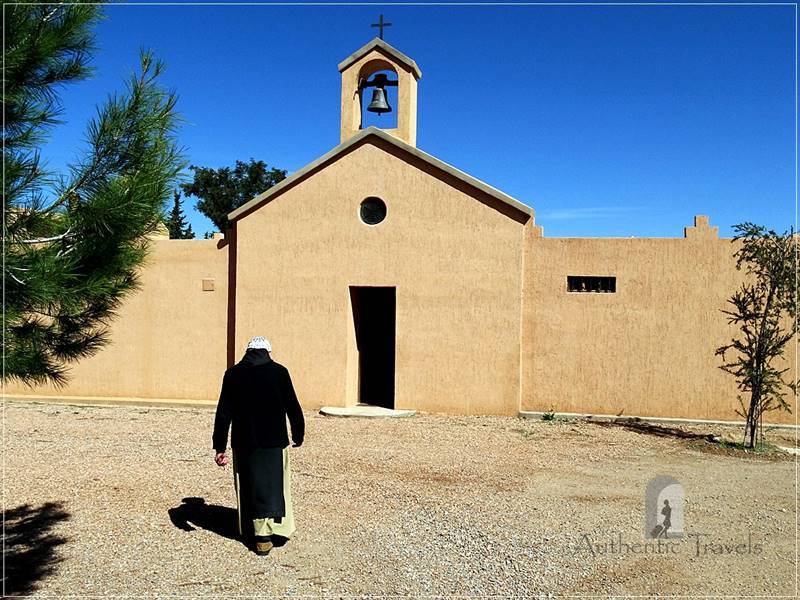
Midelt – Monastery Notre Dame de l’Atlas in the former Kasbah de Myriem: guided visit with Pere Jean Pierre
Pere Jean Pierre was one of the two survivors of the massacre of May 21st, 1996. During the civil war in Algeria, the massacre had been performed by rebels over the monks of the Tibhirine Monastery (which means ‘garden‘). I couldn’t believe that! How was it possible to meet such a personality!? A man who had overcome such a tragedy and yet had such a serenity!? Pere Jean Pierre was 91 years old. In 1996, he came to Fes, where he had a small monastery. Then, in 2000, he came to Midelt at the current monastery, from where the nuns had recently moved to a nearby location.
Pere Jean Pierre slowly walked in front of me and showed me the monastery (the church, the library, and the chapel). The chapel with Berber decorations had been later extended in the Romanic style. The bell of the church had been brought from the church in Midelt when that one closed. Initially, the monastery belonged to Cistercians, but at the moment of my visit, five Franciscan monks lived there. Also, Sister Theresa spent all her life in that monastery. A photograph of her stood as proof in the monastery’s chapel. When we entered the church, Pere Jean Pierre showed me the oratory built in honor of the seven brothers killed in the Tibhirine Monastery in Algeria. The movie ‘Les Hommes et le Dieux’ evokes the painful memory of this event.
After that, Pere Jean Pierre showed me another oratory built in honor of two other monks who lived in the monastery – Pere Foucault and Pere Peyriguere. They had been hermits in the desert among the Berber tribes (an intriguing combination of Christians and Muslims). Pere Jean Pierre made you feel love. He helped me feel calm, patience, and understanding. I suddenly felt peace and unexpected joy without any reason. His presence meant everything at that monastery. How had I wanted to leave without meeting him?!
The road from Midelt to Erfoud along the Ziz Valley
The road from Midelt to Erfoud and Rissani towns went along the Ziz Valley and Gorges. Fortified villages (ksar/ksour) with traditional mud-brick houses resembling fortresses were scattered along the road. Trees were rare while sheep and goats grazed a few surviving dried herbs here and there. The road started to climb in tight bends through a reddish rocky scenery and narrowed as it approached the Ziz Gorges. It passed a mud-brick mosque with a green minaret and some deserted ksars. Before the entrance to the Ziz Gorges, I stopped at Kasbah Douna to recover a bit from the heat.
After passing the settlement of Er Rich, palm trees became the main form of vegetation in the region, alongside low acacias and dried shrubs. The road passed through the famous Tunnel du Legionnaire (Tunnel Zaabal) – a natural rock arch, from where it further snaked through the reddish Ziz Gorges (approximately 30 kilometers long). The river Oued Ziz (a brownish water, mostly dried up) flowed down in the valley, and a few tufts of grass barely grew on the riverbanks. After crossing the tunnel, a formidable ksour lined the route along the valley. All settlements (ksours) featured the same brownish mud-brick architecture resembling the volume of a fortress.
After the Hammat Mulay Lake, the road crossed the military garrison city of Er Rachidia with mud-brick fortified walls. The town dated back to the French Foreign Legion period when it kept an eye on the nearby border with Algeria. A little further, the Ziz Valley widened, and a necklace of oases with palms opened up with numerous ksars scattered throughout the palmeraie. The road moved away from the course of the river and followed a contour line along the Ziz Valley, overlooking the dense palm forests in the valley. After passing Erfoud, I stopped at Camping Tiffina, where I pitched the tent among palm trees, Berber tents made of wool, and brownish cottages built of mud-bricks.
Route du Majhoul in the Tafilalt Oases
Short Description. From Camping Tiffina, I took a half-day round trip to the mud-brick fortified villages (ksar) in the Tafilalt Oases. In the afternoon, I relaxed at the campsite swimming pool.
Long Description.
En route to Merzouga, the Tahiri Museum of Fossils and Minerals had a courtyard packed with all kinds of fossils and minerals from the surrounding mountains (~100 kilometers away). Each type of exhibit had a different color and it had been extracted from an area with a rich geological heritage of fossil beds. Brahim, the owner of the museum, told me the southern part of Morocco had plenty of fossils. Then, he explained to me the extraction process.
He used special tools and carefully removed a part of the stone to see what was inside and unveil the fossil. The tools were similar to the ones used by dentists (Brahim laughed when I told him that). The fossil was extracted from stone and then polished using different methods. On the ground floor of the museum, an exhibition displayed phacops dating back to the Devonian period (408-436 million years old), ammonites, minerals, dinosaur bones, corals, and trilobites.
Tafilalt once stood as the terminus point of the caravan route along the Salt Road. A chain of fortified villages (ksar/ksour) started after the road passed the ruins of Sijilmassa. The villages usually stood near an oasis where locals worked in the fields or picked up dates. The crumbling mud-brick ksars looked rather primitive. They had earth on the streets and garbage and debris as the houses’ pavement, but also metallic gates and mosques with painted minarets.
The houses of a ksar stood one on top of the other one. This way, a street passed through the dark gangways on the ground floor of other houses. Somewhere in the middle of an underground street, a public fountain stood imposingly, and children played joyfully around it. Walking down the street, a man carried his two children in the mule’s holsters. Locals picked up dates from the nearby oasis and brought them home for lunch.
In Ksar Tinheras, two little girls followed me, waved at me, and eventually ran to me, hugged me, and kissed my cheeks. On the flip side, in Ksar Ouled El Ouali, kids coming out from school gathered around me and started to insist on giving them something: hip pack, pen, pendant, money, candies. I couldn’t even move forward because of them. A man banished them, but they returned and became aggressive. Eventually, I had to give up exploring the village and withdrew in the apparent safety of my car.
Later, in front of Mulay Ali Ash Sharif Mausoleum, a kid asked me to take a photo of him. Then, he got angry because I didn’t give him money for that. I pretended I didn’t understand what he wanted, but a man translated me the cause of his annoyance. I showed the kid how I erased a photo of him. He seemed pleased. However, I had another back-up photograph of him, which I didn’t delete from my memory card. After that, the road closed the loop among the ksars near Rissani – a small town with brick houses in brown colors and dusty streets with sand from the desert.
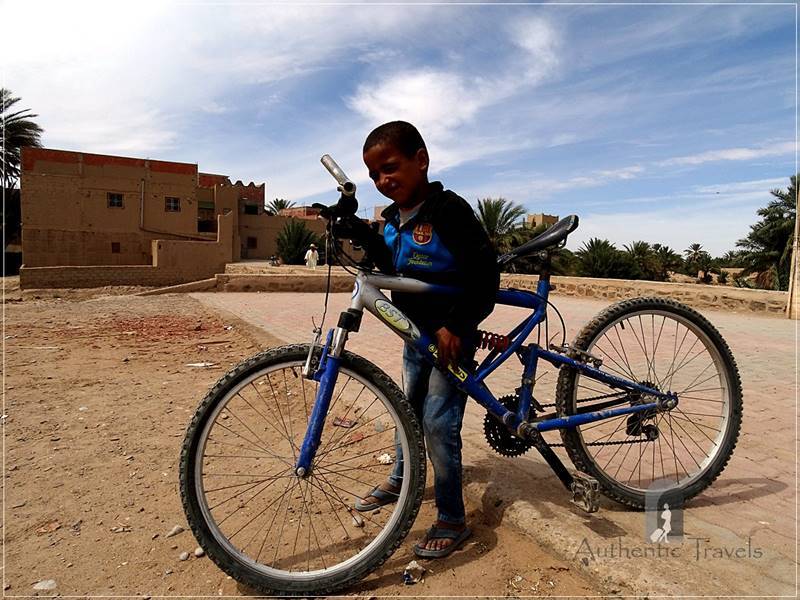
Route du Majhoul in Tafilalt Oases: Zawiya Mulay Ali Ash Sharif Mausoleum – this little boy asked me to take a photo of him and then asked for money
In the afternoon, I relaxed at the swimming pool of Camping Tiffina, which had cold water though. The camping-site owner didn’t understand why I preferred to stay there instead of taking a tour to the nearby desert of Merzouga. In the evening, I enjoyed a traditional dinner at the campsite restaurant (tajine, crusty bread, and a delicious green salad).
If you want to read more about the road trip through Morocco, here are all the Travelogues from Morocco (x21).
Have you been to Morocco or plan to go there? Leave a comment below this post and tell me what you liked in Morocco or what you want to see there.
Want to subscribe to my travelogues? Just leave your email in the subscription form below, and you’ll be notified when I publish a new post.
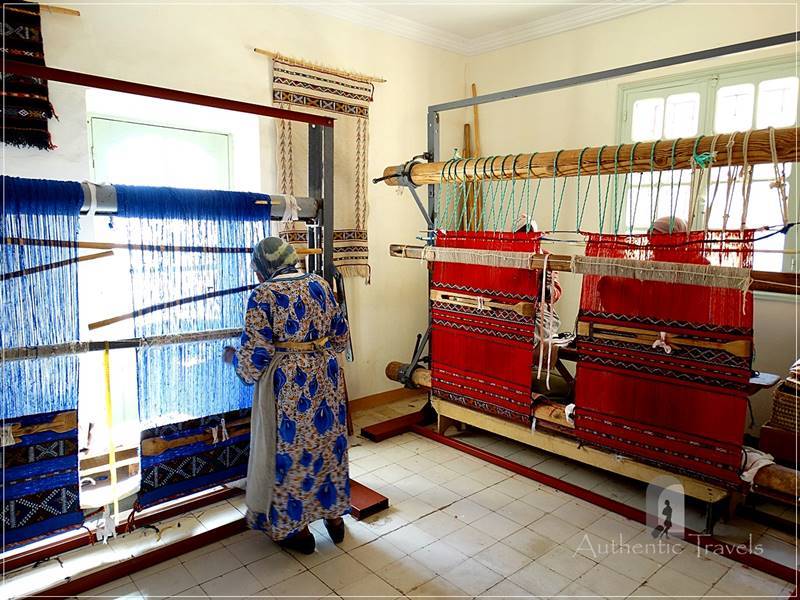
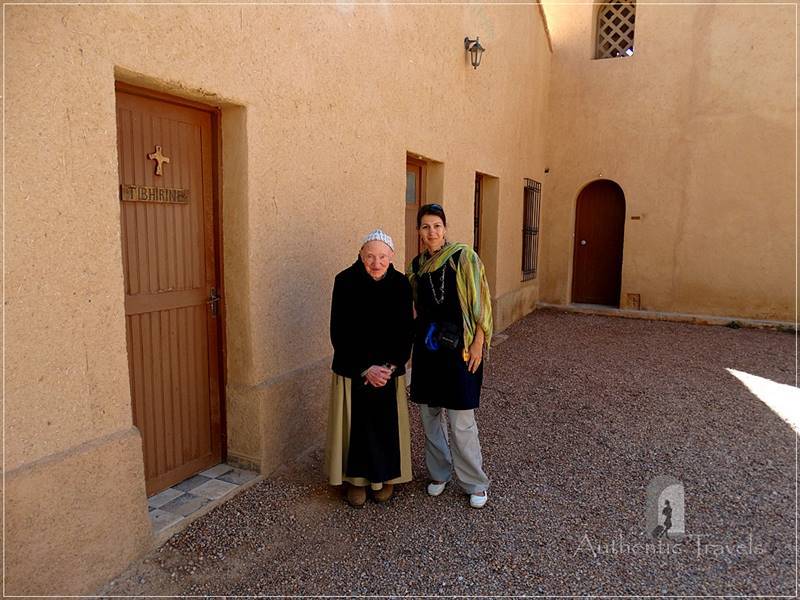
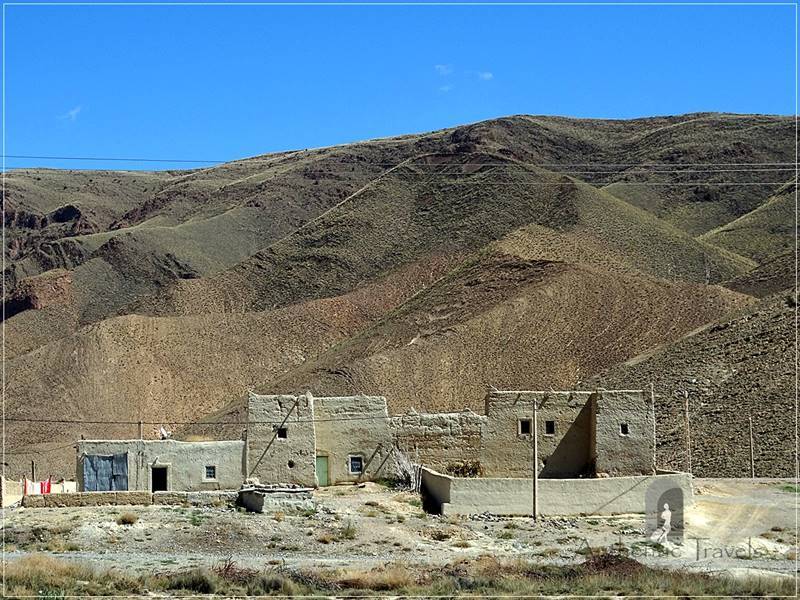
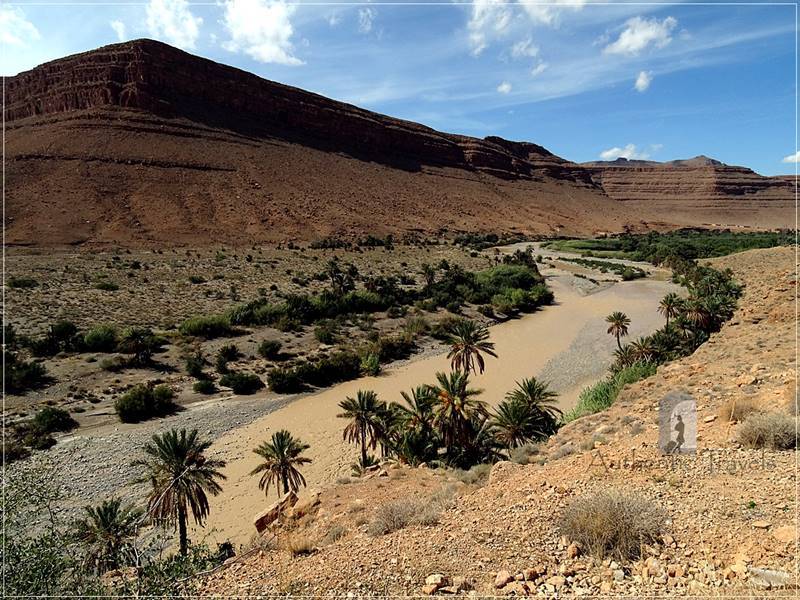
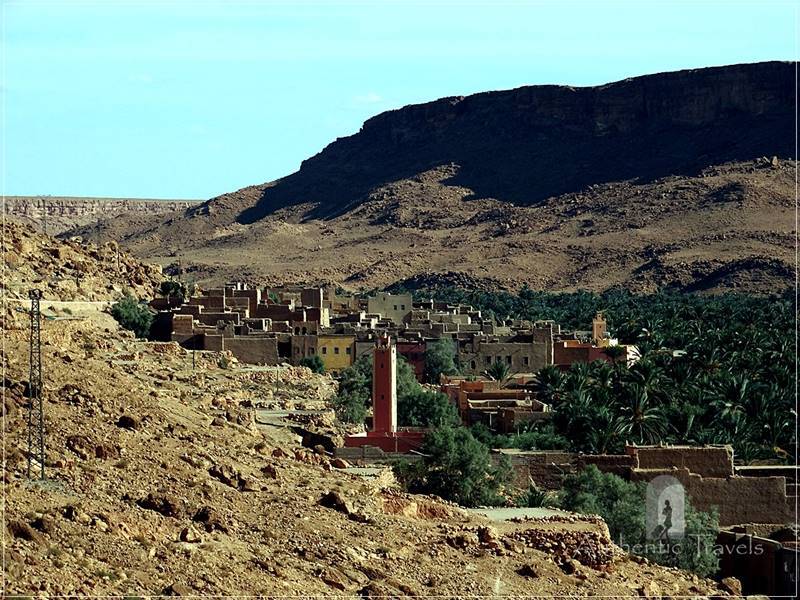
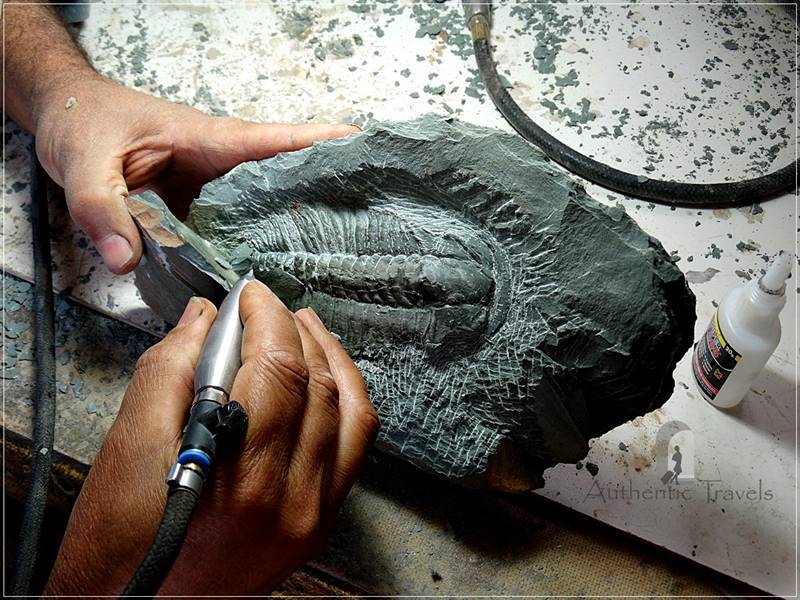
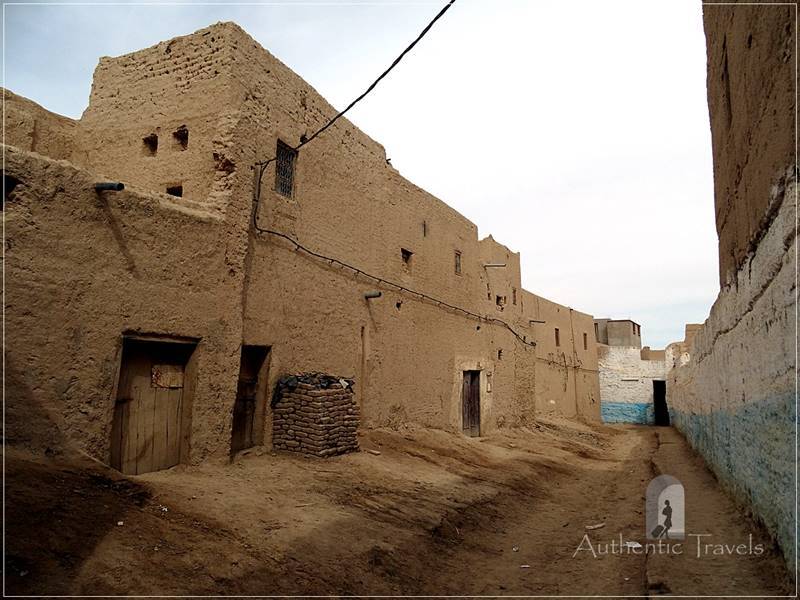
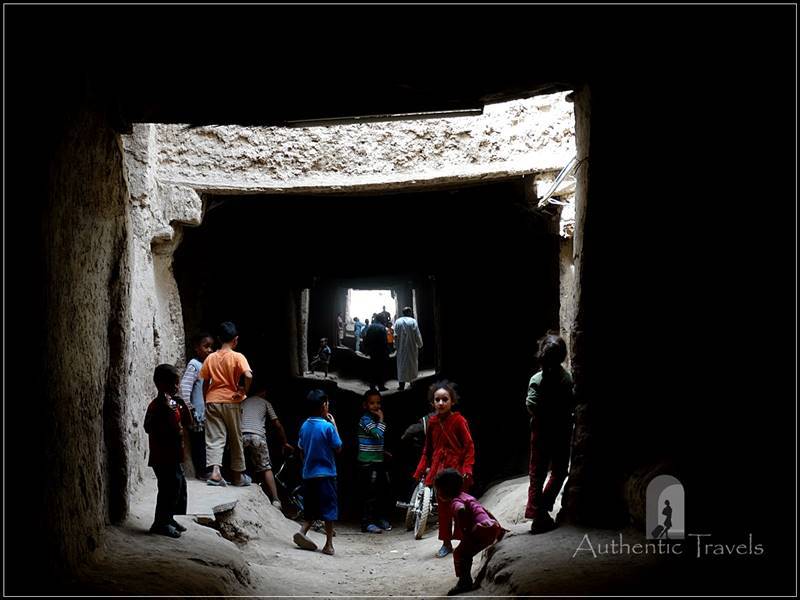
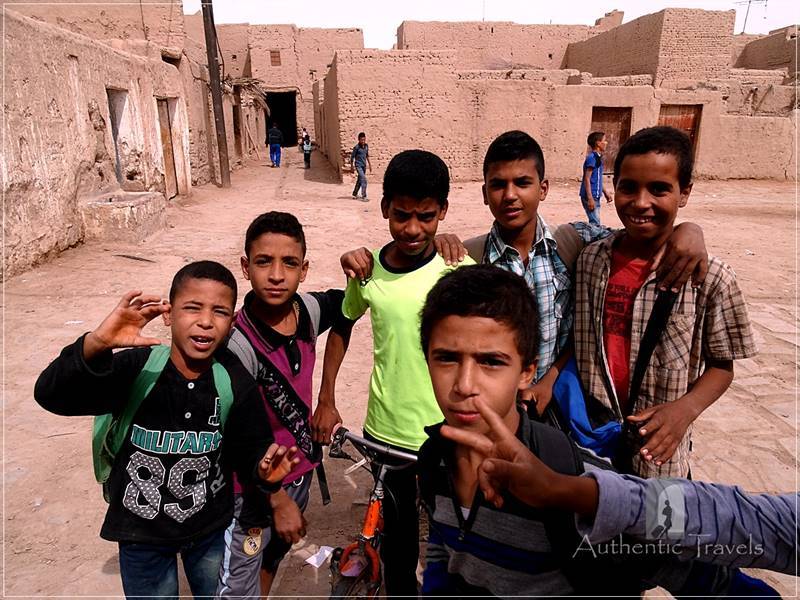
I have been very unsure about planning a trip to Morocco. To a great extent, it looks a lot like the UAE (where I live) and I always prefer to explore places which are starkly different from here. Having said that, I am also quite intrigued about Morocco, the more I read about it. Monastery Notre Dame de l’Atlas looks like a really interesting place to visit, so if I make it there someday, it’d only be because I was inspired by your post!
Nothre Dame de l’Atlas it is indeed a great place to visit and has a lot of history. I don’t know if Pere Jean Pierre still lives, though.
This information is mostly new to me since the closest I’ve been to Morocco is when I ate Moroccoan food in the northeastern United States. Never even heard of the Ziz Valley!
You will have to eat true tajine in Morocco. It is absolutely delicious.
Thank you for a wonderful post. I liked reading about the fossil museum the most in the entire post. I have visited fossil museums and been enamoured by the evolution of life forms!
I remember the special drills they had in that museum. I felt like going to the dentist, haha 🙂
I would love to get high up in the Atlas Mountains like it seems you did here. Amazing stuff!
We plan to visit Morocco one day. I found your article very interesting and thanks for sharing it with us. How fortunate to meet Pere Jean Pierre and to be shown through the monastery and learn more about him and the monastery and its significance. What a fun playground for the children at the Route de Majhoul. I would have found it unnerving with the insistence of the children especially the one with the photo.
Yes, that moment with angry children surrounding me was a bit scary even for me but now when I remember it, it’s kind of funny.
Great post!! Morroco has always been on my list and since I have already been to Morroco, I want to arrange another trip to more remote locations just like you have mentioned. It truly is an amazing country with a little bit of everything. Atlas mountain looks amazing.
Indeed, Morocco can be a big country when you want to go to so many places.
I was in Morocco in 2008, so long ago. I spent two weeks traveling with local transport. I enjoyed the Moroccan cuisine. I was delighted with nature and culture. Beautiful memories came back, thanks your article. I also traveled through the Ziz Valley. I enjoyed the Moroccan villages, too. The Atlas Mountains is the best part of Marocco for me. I like your story. I like your great photos.
Thank you so much Agnes, I loved the tajine too. It is so hearty and I was never hungry after eating a tajine.
It’s interesting to hear about your adventures in Morocco, I actually have never heard of Midelt or the Tafilalt Oasis. I have never been to Morocco, but I think I would get tired of the pushy men as well. That’s nice you were able to go to Kasbah Outhmane Ou Moussa instead and have a great local experience at the weaving and embroidery workshop. Sounds kind of scary with all the kids coming up to you in Ksar Ouled El Ouali,
Midelt it’s actually en route to Ziz Valley (which is pretty famous), while Tafilalt Oasis are near Merzouga (which again is very touristic). But visitors usually go to this touristy destination but they don’t know what beautiful places they have nearby.
I loved exploring the Atlas Mountains and the Berber villages around them. Sounds like you had an amazing experience. I had a similar sitation with the school kids in some of those remote villages as well.
Yeah, those kids were pretty aggressive and I couldn’t enjoy my visit when they surrounded me.
It is such a remote place. But fossil museum is of interest. How did you reach there? It is possible to see the place via public transportation from a bigger town?
I had a rented car – which is the best way to visit Morocco and traffic is not crazy at all (except big cities). Public transportation is very scarce and it would be difficult to find someone to talk English in these remote areas.
Hi Iluana, I love how you have tarvelled an off beat trail in Morocco and seen the life of the locals first hand, I would absolutely love to do something similar! The handloom, fossil museum and the camping appeal to me a lot. I can almost imagine what it was like to meet Pere Jean Pierre! What were the day time temperatures like when you visited and how did you manage your meals while trekking through the villages?
Actually, I didn’t trek through the villages. I had a rented car and stopped here and there en route. So, whenever I was hungry I stopped at a local restaurant or bought food from shops. Temperatures were very ok in October, 20-25 C degrees.
You were quite lucky to get the history lessons from none other than a survivor – Pere Jean Pierre. The first hand account definitely adds the punch to the story. I found your visit to the Fossil museum also, interesting, Amazing how much work goes into excavating and cleaning up those pieces of rock. Lovely account of your trip.
Yes, I was also intrigued by the work of the guy in the fossil museum, especially that it reminded me by dentist visits.